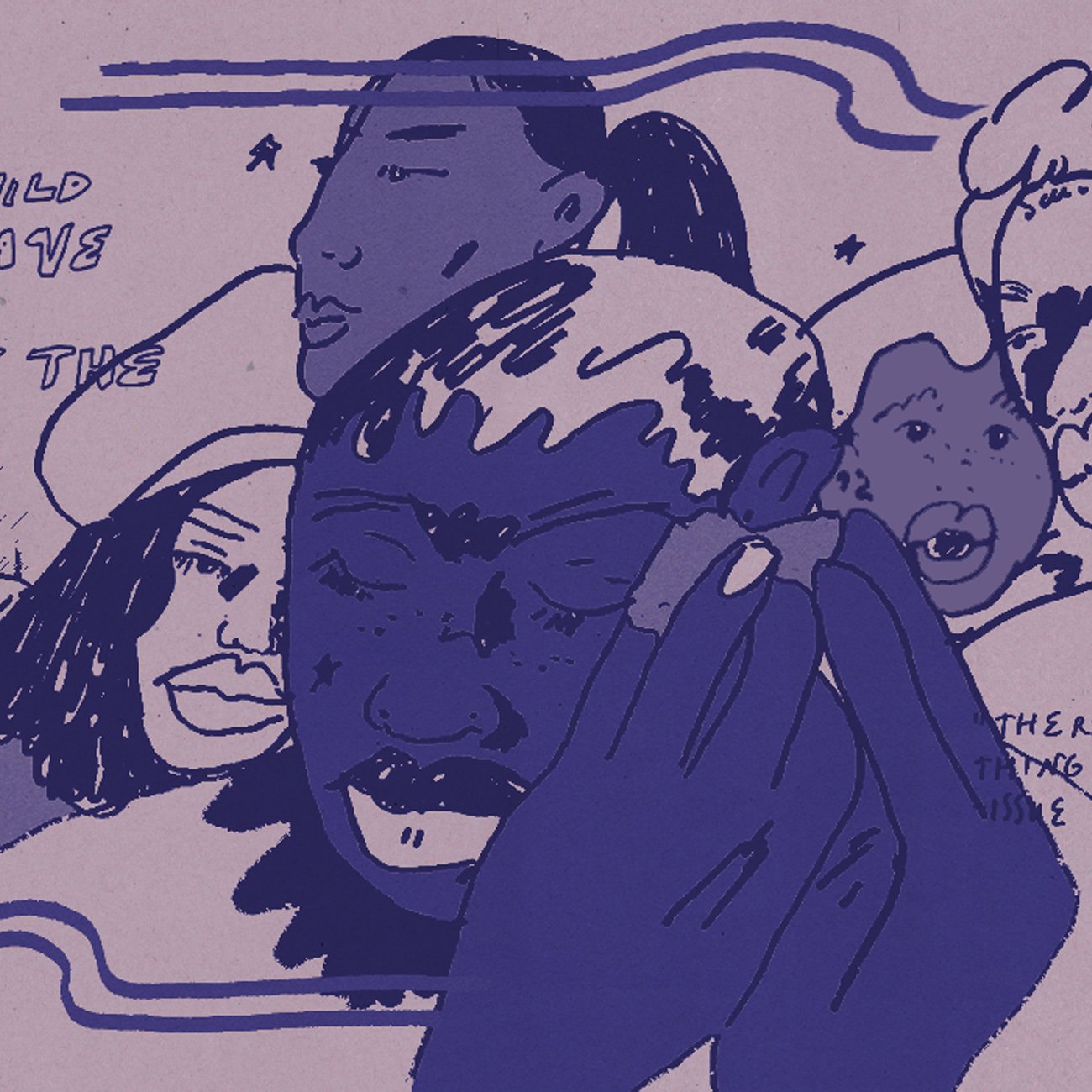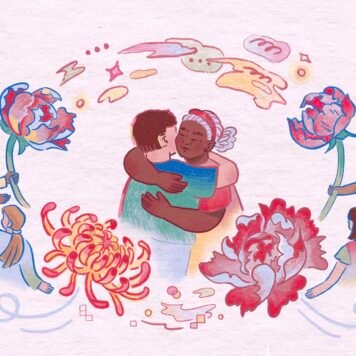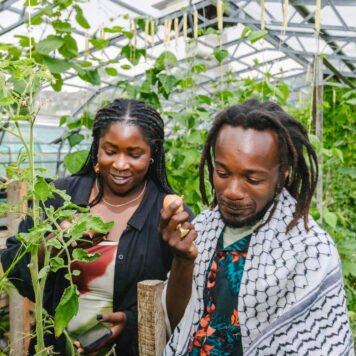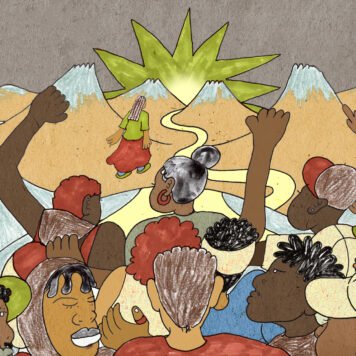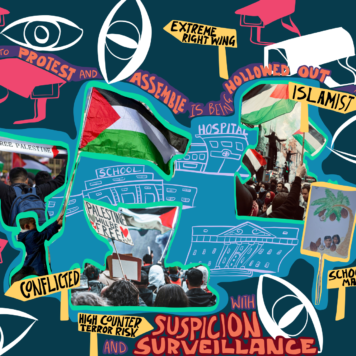Every person has a right to agency, access, and information, in relation to their reproductive destiny. But a person’s class, culture, religion, gender, sexuality, physical environment, social status, economic status, physical and mental health may inhibit their ability to implement their reproductive rights and to have control over their reproductive health.
The primacy concern of Reproductive Justice is to improve the material conditions of an individual’s community to ensure:
- the right to have a child;
- the right not to have a child; and,
- the right to parent the children we have.
Reproductive Justice advocates to dismantle systems of discrimination that does, and could, rob an individual of their access to reproductive health and rights.
As co-director of Reproductive Justice Initiative (RJI) (formerly Decolonising Contraception or DC), Dr Annabel Sowemimo, explains: “For far too long conversations around reproductive health have stagnated and been limited to individuals making good or bad decisions, but our reproductive lives are far more complicated. If you are on a zero-hour contract or minimum wage; how easy is it to take time off work or keep calling your GP for an appointment?”
Reproductive Rights and Reproductive Health versus Reproductive Justice
Reproductive Justice is different from the aims of the Reproductive Health and Reproductive Rights agendas.
Reproductive Health relates to the standard of the “service delivery” in reproductive health settings and Reproductive Rights “addresses legal issues” that restricts an individual’s reproductive choices.
On the other hand, Reproductive Justice focuses on collective action to dismantle forms of discrimination that prevents an individual’s access to their reproductive health, rights, and choices.
Context: where did Reproductive Justice emerge from?
Reproductive Justice was first developed by Reproductive Rights activists to enfranchise the diverse experiences of individuals that needed reproductive rights but could not access them.
Reproductive Rights are the legal mechanisms that allow individuals to articulate and implement their reproductive choices. Reproductive Rights include “the legal right to contraception, abortion, fertility treatment, reproductive health, and access to information about one’s reproductive body.”
Reproductive rights were traditionally based on the imperative needs of cis women from the global north with economic and social resources. Reproductive Justice activists saw that the experiences of cis white women made reproductive rights myopic in their perspective, irrelevant to the needs of a wide range of people in their communities, and difficult to implement on the ground for underserved populations.
Proponents of Reproductive Justice recognise that legacies of systemic discrimination have contemporary repercussions on the ability of individuals to control their reproductive destiny.
Natali Valdez identifies that Black, Brown and Indigenous bodies have traditionally faced especial control because of the reproduction policies of the nation state. This especial and exceptional control is not resolved with an access to Reproductive Rights, and “contemporary examples of forced sterilisation, family separation at borders, forced adoptions, and expansive juvenile detention” continue to be inflicted on Black, Brown and Indigenous bodies throughout the world.
Due to the limitations of Reproductive Rights to contend with endemic discrimination, Reproductive Justice was primarily developed from the experiences of Black and Indigenous women across North America. It was first presented by activists in the mid-nineties at the International Conference on Population and Development in Cairo “where the entire world agreed that the individual right to plan your own family must be central to global development”.
The Reproductive Justice mandate sought to imbue the language of international frameworks on reproductive rights with the acknowledgement that some individuals do not “own,” “control,” or make decisions about their body, health, and relationships. It instead acknowledges that reproductive rights exist in discriminatory systems and societies that inhibit an individual’s ability to make reproductive choices.
What are the aims and approaches of the Reproductive Justice Framework?
Reproductive Justice activists recognise that individuals do not have consistent access to reproductive choices in healthcare systems. This is because a culmination of external socio-political and economic factors contributes to an individual’s ability to make reproductive choices.
Reproductive Justice acknowledges that the totality of an individual’s experience must therefore be considered when attempting to determine whether a person can make reproductive choices.
For example, abortion is not illegal in the UK and can be legally procured. However, prior to the legalisation of telemedical abortions in the UK in 2022, 8% of women still continued to illegally procure abortion pills.
According to a briefing on the End Violence Against Women Coalition, individuals “risked significant jail time to avoid their abortions being discovered in their abusive relationships.”
Reproductive Justice therefore recognises that the choice to access legal abortions in the UK is not the only inhibiting factor for a person to control their reproductive destiny. It also shows that compounding factors can inhibit the ability of individuals to access legal and available reproductive health services.
Reproductive Justice recognises that “there is no such thing as a single-issue struggle because we do not live single-issue lives.” Reproductive Justice as a result is primarily “about access, not choice.” This is because an individual may not be able to make required reproductive choices for their reproductive health because of:
-
- a lack of physical proximity to sexual and reproductive health providers;
- a lack of money to afford sexual and reproductive healthcare services;
- stigma and socio-cultural pressures that influences an individual’s choices;
- a lack of availability of accessible information on health services and choices; and
- healthcare providers who don’t understand the specific needs of patients from populations that are traditionally disenfranchised, from people with additional mental and physical health needs to LGBTQI+ folk.
Why is this a global issue?
A recent report by ODI detailed that Reproductive Justice is a global issue because reproductive rights are “transgressed around the world by misogynistic institutions.”
Populations that are specifically targeted for reproductive injustice are those who are at the “intersection of multiple oppressions” and or “don’t conform to gender norms (such as strict ideas about female sexuality ot respectability).”
The Reproductive Justice mandate has had some success in implementing its understanding of advocacy for improving reproductive health outcomes for underserved populations in international conventions and frameworks for reproductive health. For example, the World Health Organisation has extended the implementation of Reproductive Rights to include “right to make decisions concerning reproduction free of discrimination, coercion and violence, as expressed in human rights documents.” However, despite its success in global health legal frameworks, it would be a mistake to see the agenda and aims of Reproductive Justice as a single monolith across domestic or local contexts.
Each population has specific needs, and a Reproductive Justice agenda requires bespoke advocacy to dismantle barriers to empowering individuals in accessing and implementing their reproductive rights and improving their reproductive health outcomes.
Reproductive Justice encourages activists and researchers to support disenfranchised communities to develop their own reproductive justice mandates. This allows populations to identify reproductive rights that pertain to their unique contexts.
Individuals in disenfranchised communities have historically been subject to coercive, or forced, reproductive health services across the world. Reproductive Justice recognises that this previous disenfranchisement and abuse necessitates specialised policy attention that mitigates the impact of that harm and creates sustainable solutions in the provision of healthcare for the future.
A Case Study of a Reproductive Justice organisation in the UK
RJI (Reproductive Justice Initiative) is a charity aimed at eradicating sexual and reproductive health inequalities for people living in the UK. RJI worked to increase knowledge about the colonial practices that are entrenched within the medical practice of sexual and reproductive health in the UK, and the subsequent experiences of patients in the NHS. RJI is seeking to do this by widening the conversation of the socio-political circumstances that govern an individual’s reproductive decisions in the UK.
The NHS in the UK makes a huge difference in the distribution and outcomes of sexual and reproductive health services that exist nationally. But, via the Reproductive Justice framework, RJI is seeking to discuss, highlight, and find solutions for the very different sexual and reproductive health outcomes in the UK as defined by geography, racial capitalism, and classism.
RJI seeks to disrupt notions that Reproductive Rights are evenly distributed amongst people that live in the UK. It wants to imbue Reproductive Rights that are relevant, and can be implemented, for people living in the UK from a wide spectrum of different social, economic, racial, gender identities and sexual orientations.
For example, in a recent report by RJI, women from African, Caribbean, and Asian backgrounds who lived in England discussed their abortion experiences in the NHS. The women discussed how their choices of whether to have an abortion were influenced by their physical, cultural, religious, and socio-economic circumstances. One woman detailed the difficulty of accessing an abortion because pre-existing medical conditions required specialised care within the abortion procedure; another woman detailed the pressures of trying to navigate whether she could procure an abortion without her parents discovering it.
How has, and will, Reproductive Justice evolve?
Reproductive Justice acknowledges that ensuring access to reproductive rights and health services requires adaptability to time and context.
Previously, the language of reproductive justice was previously highly gendered and fixated on cis women. Despite this, “movements for reproductive justice are openly hospitable to trans people” because reproductive justice “imagines better futures through radical forms of resistance and criticism.”
Analyses on reproductive justice also remain underexplored in terms of systematic data collection and peer-reviewed analyses in the UK and globally. However, reproductive justice is gaining an increasing but discrete recognition across the world. Reproductive Justice articulates a language of analysis that is “intersectional” and “deeply political” that is applicable to numerous modes of study, contexts, and situations.
In the UK, numerous academic and activist groups are emerging to form a new language for Reproductive Justice. But the language of reproductive justice in the UK remains in its infancy. Instead there is active momentum with reproductive activists and academics to develop a Reproductive Justice framework across the UK:
What successes has the movement seen? How have these been evolving?
Dr Sowemimo intends for RJI to maintain this commitment to gender inclusivity based on the latest iteration of reproductive justice frameworks, globally. And wants to further explore how reproductive justice can be used to understand the current landscape of sexual and reproductive health services in the UK, to collect data, and to advocate for solutions for underserved populations.
Reproductive Justice frameworks are also permeating our collective understanding of reproductive rights in the workplace. There is increasing pressure on workplaces to accommodate reproductive realities, especially for birthing people or people with menstrual cycles. For example:
-
- Support The ‘Fertility Treatment: Employment Rights’ Bill. Fertility Matters at Work has begun to advocate for persons undergoing fertility treatment to have legal rights in employment law to procure protections as they build their family.
- Miscarriage bereavement leave in the UK: There have been calls in the British Medical Journal for employers to provide specialised bereavement leave for persons that experience a miscarriage.
- Bloody Good Employers: An accreditation body has emerged that provides support for “long-term positive change to normalise menstruation in our workplaces, and support everyone who menstruates at work.”
But Reproductive Justice remains a dynamic framework that evolves and entrenches feedback mechanisms to ensure grassroots engagement by underserved communities for reproductive health outcomes.
The definition of Reproductive Justice will continue to be adapted to the needs and particularities of communities across the UK and the world. But it will always strive to provide solutions for barriers to optimal reproductive health for everyone.
What can you do?
Find out more about the following organisations:
- Reproductive Justice Initiative
- Abortion Rights
- Five x More
- Shine Aloud UK
- Abuela Doulas
- Pregnant Then Screwed
- Race and Health
Books:
- Heart of the Race: Black Women’s Lives In Britain by Beverely Bryan, Stella Dadzie, Suzanne Scafe
- Killing the Black Body: Race, Reproduction and the Meaning of liberty by Dorothy Roberts
- Reproductive Justice, An Introduction by Loretta Ross and Rickie Solinger
- Reproductive Rights and Wrongs: The Global Politics of Population Control by Betsy Hartmann
- Abolish the Family by Sophie Lewis
- Weighing the Future by Natali Valdez
- Reproductive (In)justice: Racism, Pregnancy, and Premature Birth by Dána-Ain Davis
Podcasts:
- The Sex Agenda by Reproductive Justice Initiative (formerly RJI)
- ReproSoc Cambridge on YouTube
